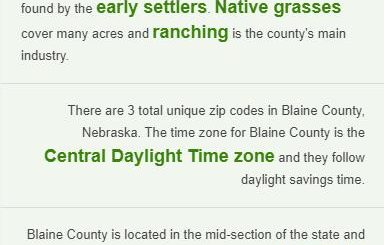Fairbanks North Star Borough, Alaska Weather by Month
Fairbanks North Star Borough, located in the heart of Alaska, experiences a subarctic climate characterized by long, cold winters and relatively warm summers. The weather in this region is heavily influenced by its high latitude and interior location. In this comprehensive overview, we’ll delve into the climatic nuances of Fairbanks North Star Borough month by month.
January: Deep Winter Freeze Fairbanks starts the year in the grip of winter. January is characterized by frigid temperatures, with average lows plummeting to around -15°F to -20°F (-26°C to -29°C) and highs ranging from -5°F to 0°F (-21°C to -18°C). The landscape is often covered in a blanket of snow, and residents embrace winter activities like dog sledding and ice fishing. See calculatorinc.com for climate and weather in Anchorage, Alaska.
February: Winter’s Embrace Continues February maintains the stronghold of winter, with similar temperature ranges as January. Average lows hover between -15°F to -10°F (-26°C to -23°C), while highs reach -5°F to 5°F (-21°C to -15°C). The days start to lengthen slightly, but the chilly temperatures persist, and outdoor enthusiasts continue to enjoy the winter wonderland that blankets the region.
March: Transition to Spring March marks the beginning of the transition to spring in Fairbanks. Average low temperatures range from -10°F to -5°F (-23°C to -21°C), and highs from 5°F to 15°F (-15°C to -9°C). As daylight increases, there’s a noticeable shift in the landscape, with the promise of warmer days ahead. However, snow cover is still prevalent, maintaining the winter charm.
April: Spring Slowly Emerges April sees the gradual emergence of spring. Average lows range from 5°F to 15°F (-15°C to -9°C), and highs from 25°F to 35°F (-4°C to 2°C). The days become noticeably longer, and the first signs of melting snow appear. While winter activities persist, there’s a palpable sense of anticipation for the thawing of the landscape.
May: Spring in Full Swing May heralds the arrival of spring in full swing. Average low temperatures rise to the range of 25°F to 35°F (-4°C to 2°C), and highs reach 45°F to 55°F (7°C to 13°C). The snow begins to recede, revealing the ground beneath. Trees start to bud, and the landscape transforms into a mix of winter remnants and burgeoning greenery.
June: Summer’s Arrival June brings the onset of summer to Fairbanks. Average low temperatures range from 40°F to 50°F (4°C to 10°C), and highs climb to 65°F to 75°F (18°C to 24°C). Summer solstice occurs, granting the region nearly 24 hours of daylight. Outdoor activities flourish, and residents take advantage of the warmer temperatures to explore the pristine wilderness.
July: Peak of Summer July is the peak of summer in Fairbanks, with average low temperatures ranging from 50°F to 60°F (10°C to 16°C) and highs from 70°F to 80°F (21°C to 27°C). The landscape is in full bloom, and outdoor enthusiasts can enjoy activities like hiking, fishing, and camping. The extended daylight hours contribute to a lively and vibrant atmosphere.
August: Late Summer Warmth August retains the warmth of summer, with average low temperatures ranging from 45°F to 55°F (7°C to 13°C) and highs from 65°F to 75°F (18°C to 24°C). As the days begin to shorten, there’s still ample time to enjoy the outdoor beauty of Fairbanks. Late summer is a popular time for events and festivals that celebrate the region’s culture and natural splendor.
September: Autumn’s Arrival September marks the onset of autumn in Fairbanks. Average low temperatures range from 35°F to 45°F (2°C to 7°C), and highs from 50°F to 60°F (10°C to 16°C). The vibrant fall colors paint the landscape as the days continue to shorten. Residents and visitors can witness the stunning transformation of the birch and aspen trees against the backdrop of the northern sky.
October: Crisp Fall Days October brings crisper temperatures and a continuation of the fall foliage display. Average low temperatures range from 20°F to 30°F (-7°C to -1°C), and highs from 30°F to 40°F (-1°C to 4°C). Winter begins to make its presence felt, and there’s a sense of preparation for the colder months ahead.
November: Deepening Winter November sees a return to winter conditions, with average low temperatures ranging from 5°F to 15°F (-15°C to -9°C) and highs from 15°F to 25°F (-9°C to -4°C). Snowfall becomes more frequent, and the landscape once again transforms into a winter wonderland. Winter activities become a focus as residents gear up for the colder months.
December: Winter’s Firm Grip December brings winter’s firm grip back to Fairbanks. Average low temperatures drop to -10°F to 0°F (-23°C to -18°C), and highs range from 5°F to 15°F (-15°C to -9°C). The days are short, and the region experiences the longest nights of the year. Snow blankets the ground, creating a serene and picturesque scene as the cycle of seasons begins anew.
In conclusion, Fairbanks North Star Borough experiences a stark and dynamic climate that defines the rhythm of life for its residents. From the intense cold of winter to the warmth of summer’s peak, each month offers a unique experience and showcases the resilience of both the natural environment and the community that calls this northern region home.



